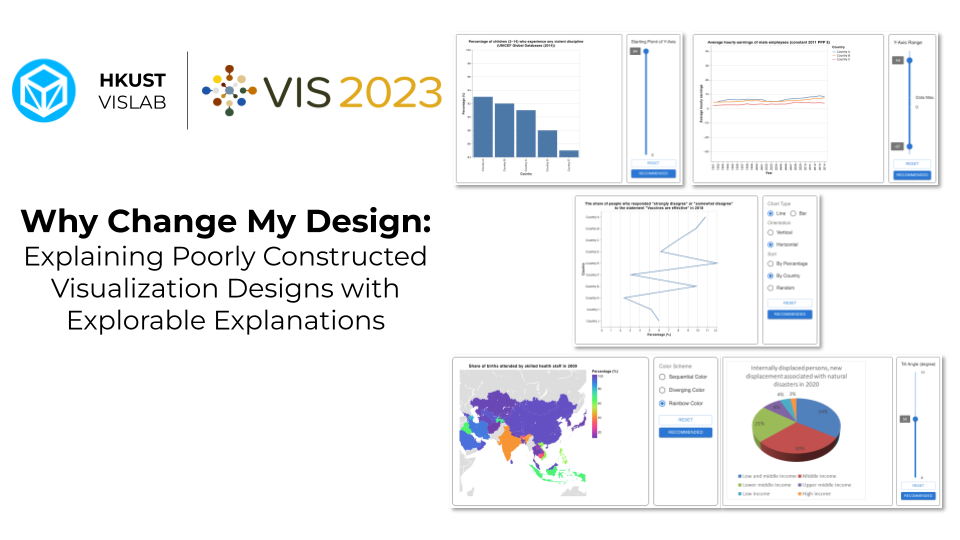Why Change My Design: Explaining Poorly Constructed Visualization Designs with Explorable Explanations
Leo Yu-Ho Lo, Yi-Fan Cao, Leni Yang, Huamin Qu
DOI: 10.1109/TVCG.2023.3327155
Room: 105
2023-10-26T00:45:00ZGMT-0600Change your timezone on the schedule page
2023-10-26T00:45:00Z

Fast forward
Full Video
Keywords
Information Visualization, Deceptive Visualization, Explorable Explanations
Abstract
Although visualization tools are widely available and accessible, not everyone knows the best practices and guidelines for creating accurate and honest visual representations of data. Numerous books and articles have been written to expose the misleading potential of poorly constructed charts and teach people how to avoid being deceived by them or making their own mistakes. These readings use various rhetorical devices to explain the concepts to their readers. In our analysis of a collection of books, online materials, and a design workshop, we identified six common explanation methods. To assess the effectiveness of these methods, we conducted two crowdsourced studies (each with N = 125) to evaluate their ability to teach and persuade people to make design changes. In addition to these existing methods, we brought in the idea of Explorable Explanations, which allows readers to experiment with different chart settings and observe how the changes are reflected in the visualization. While we did not find significant differences across explanation methods, the results of our experiments indicate that, following the exposure to the explanations, the participants showed improved proficiency in identifying deceptive charts and were more receptive to proposed alterations of the visualization design. We discovered that participants were willing to accept more than 60% of the proposed adjustments in the persuasiveness assessment. Nevertheless, we found no significant differences among different explanation methods in convincing participants to accept the modifications.